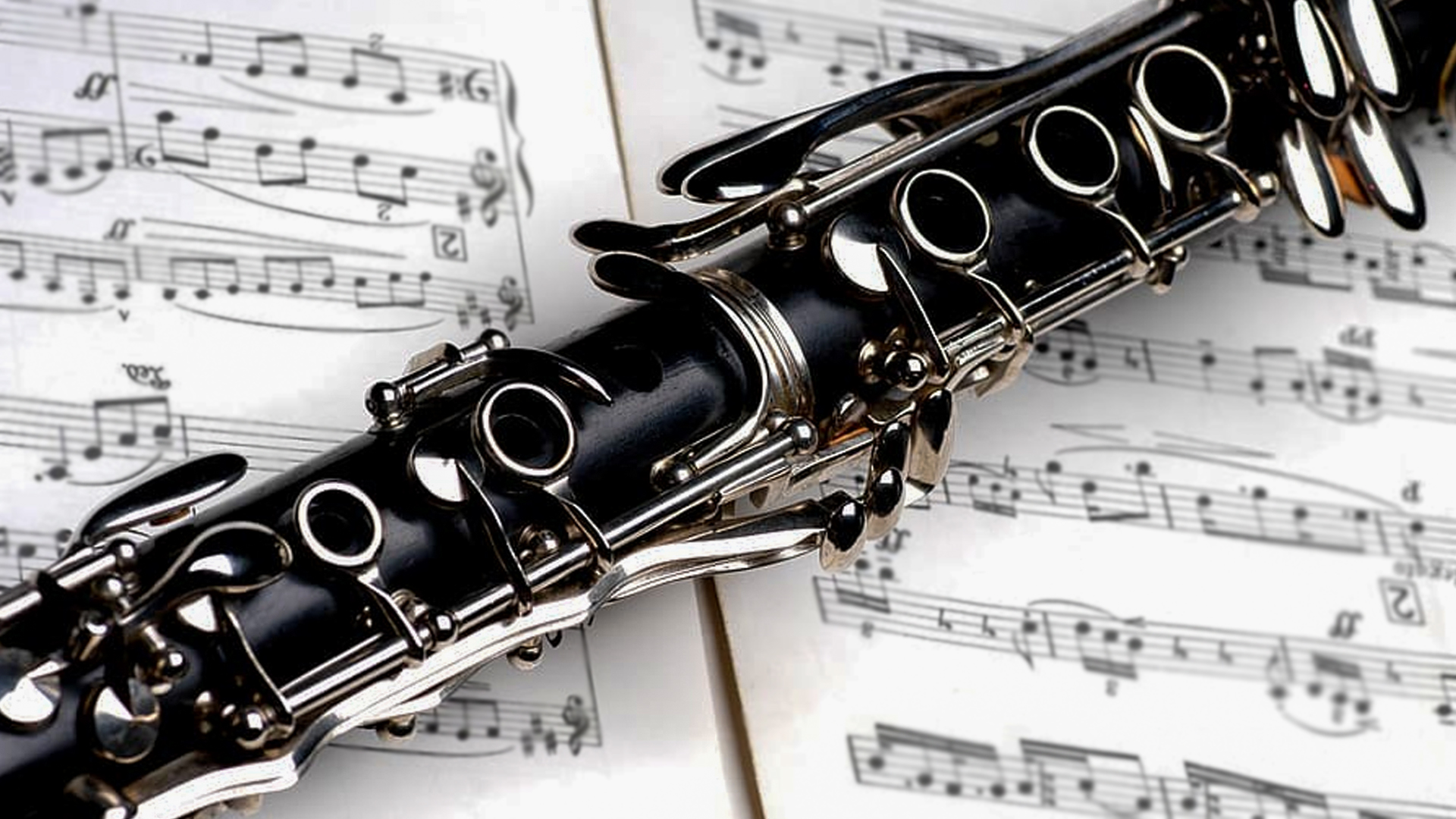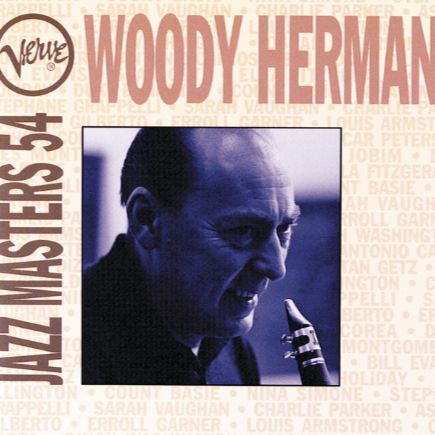Woody Herman, l’art de réinventer le big band jazz
Woody Herman occupe une place singulière dans l’histoire du jazz. Clarinettiste et saxophoniste de formation, il s’impose dès les années 1930 comme un musicien polyvalent et charismatique, capable de conjuguer talents d’instrumentiste, de chanteur et de chef d’orchestre. Il étudie la musique et apprend à jouer du saxophone alto à l’âge de onze ans, de la clarinette à l’âge de quatorze ans et commence à se faire un nom en tant qu’enfant prodige.
Plus qu’un simple leader de big band, il fut l’âme de plusieurs générations d’ensembles qu’il appelait ses Herds, véritables laboratoires où se réinventait sans cesse l’art du grand orchestre de jazz. Le premier Herd, avec quatre musiciens du groupe d’Isham Jones, débute au Roseland Ballrom de New York le 8 novembre 1936 et se distingue par une énergie ancrée dans le swing, tout en laissant place à des couleurs blues marquées.
Le succès de titres comme Woodchopper’s Ball (1939), devenu un classique du répertoire des big bands, témoigne de son flair artistique et de sa capacité à fédérer un large public. Herman y révèle déjà son talent pour mettre en valeur ses musiciens, en encourageant les solistes et en créant des arrangements dynamiques.
Dans les années 1940, le Second Herd franchit une étape décisive: inspiré par le bebop naissant, il introduit une écriture plus complexe et une modernité audacieuse. Egalement connu sous le nom de The Four Brothers Band, il était composé de Stan Getz, Herbie Steward et Zoot Sims au saxophone ténor et Serge Chaloff au baryton. L’un de ses joyaux, Early Autumn (1948), révèle le jeune Stan Getz et illustre la sensibilité nouvelle que Herman savait insuffler à ses formations. Ses orchestres deviennent alors un creuset où se croisent certains des plus grands talents du jazz, de Zoot Sims à Serge Chaloff, et où se dessine l’avenir du style cool.
Les décennies suivantes confirment son rôle de passeur. Herman parvient à maintenir ses Herds dans l’actualité en intégrant des influences variées: le hard bop des années 1950, les rythmes plus électriques des années 1970 et même certains accents rock. Cette adaptabilité ne l’a jamais détourné de l’exigence artistique, ni de sa volonté de transmettre le goût du big band à de nouvelles générations de musiciens et de publics.
Woody Herman, el arte de reinventar el big band jazz
Woody Herman ocupa un lugar singular en la historia del jazz. Clarinettista y saxofonista de formación, se impuso desde los años treinta como un músico polifacético y carismático, capaz de conjugar sus talentos de instrumentista, cantante y director de orquesta. Estudió música, aprendió a tocar el saxofón alto a los once años, la clarineta a los catorce y comenzó a hacerse un nombre como niño prodigio.
Más que un simple líder de big band, fue el alma de varias generaciones de conjuntos que él llamaba sus Herds, verdaderos laboratorios donde se reinventaba constantemente el arte de la gran orquesta de jazz. El primer Herd, con cuatro músicos procedentes del grupo de Isham Jones, debutó en el Roseland Ballroom de Nueva York el 8 de noviembre de 1936 y se distinguió por una energía arraigada en el swing, dejando al mismo tiempo espacio a colores marcadamente blues.
El éxito de títulos como Woodchopper’s Ball (1939), convertido en un clásico del repertorio de las grandes orquestas, testimonia su instinto artístico y su capacidad de reunir a un público amplio. Herman revelaba ya su talento para realzar a sus músicos, animando a los solistas y creando arreglos dinámicos.
En los años cuarenta, el Second Herd dio un paso decisivo: inspirado por el bebop naciente, introdujo una escritura más compleja y una modernidad audaz. Conocido también como The Four Brothers Band, estaba formado por Stan Getz, Herbie Steward y Zoot Sims en el saxofón tenor y Serge Chaloff en el barítono. Una de sus joyas, Early Autumn (1948), reveló al joven Stan Getz e ilustró la nueva sensibilidad que Herman sabía infundir en sus formaciones. Sus orquestas se convirtieron entonces en un crisol donde se cruzaban grandes talentos del jazz, de Zoot Sims a Chaloff, y donde se perfilaba el futuro del estilo cool.
Las décadas siguientes confirmaron su papel de mediador. Herman consiguió mantener a sus Herds en la actualidad integrando influencias variadas: el hard bop de los años cincuenta, los ritmos más eléctricos de los setenta e incluso ciertos acentos rock. Esta adaptabilidad nunca lo apartó de la exigencia artística ni de su voluntad de transmitir el gusto por el big band a nuevas generaciones de músicos y públicos.
Woody Herman, l’arte di reinventare il big band jazz
Woody Herman occupa un posto singolare nella storia del jazz. Clarinettista e sassofonista di formazione, si impose già negli anni Trenta come musicista poliedrico e carismatico, capace di coniugare i talenti di strumentista, cantante e direttore d’orchestra. Studiò musica, imparò a suonare il sassofono contralto a undici anni, il clarinetto a quattordici e iniziò a farsi un nome come bambino prodigio.
Più che un semplice leader di big band, fu l’anima di diverse generazioni di complessi che chiamava i suoi Herds, veri laboratori in cui si reinventava costantemente l’arte della grande orchestra jazz. Il primo Herd, con quattro musicisti provenienti dal gruppo di Isham Jones, debuttò al Roseland Ballroom di New York l’8 novembre 1936 e si distinse per un’energia radicata nello swing, lasciando al tempo stesso spazio a forti sfumature blues.
Il successo di brani come Woodchopper’s Ball (1939), divenuto un classico del repertorio delle grandi orchestre, testimonia il suo intuito artistico e la capacità di radunare un vasto pubblico. Herman rivelava già allora il suo talento nel valorizzare i musicisti, incoraggiando i solisti e creando arrangiamenti dinamici.
Negli anni Quaranta, il Second Herd compì un passo decisivo: ispirato dal nascente bebop, introdusse una scrittura più complessa e una modernità audace. Conosciuto anche come The Four Brothers Band, era formato da Stan Getz, Herbie Steward e Zoot Sims al sassofono tenore e Serge Chaloff al baritono. Uno dei suoi gioielli, Early Autumn (1948), rivelò il giovane Stan Getz e illustrò la nuova sensibilità che Herman sapeva infondere nelle sue formazioni. Le sue orchestre divennero così un crogiolo in cui si incontravano grandi talenti del jazz, da Zoot Sims a Chaloff, e in cui prendeva forma il futuro del cool jazz.
I decenni successivi confermarono il suo ruolo di mediatore. Herman riuscì a mantenere i suoi Herds al passo con i tempi integrando influenze diverse: l’hard bop degli anni Cinquanta, i ritmi più elettrici degli anni Settanta e persino alcuni accenti rock. Questa adattabilità non lo distolse mai dall’esigenza artistica, né dalla volontà di trasmettere il gusto del big band a nuove generazioni di musicisti e di pubblici.
Woody Herman, the art of reinventing big band jazz
Woody Herman holds a unique place in the history of jazz. Trained as a clarinetist and saxophonist, he emerged in the 1930s as a versatile and charismatic musician, combining his skills as an instrumentalist, singer, and bandleader. He studied music, learned alto saxophone at age eleven, clarinet at fourteen, and soon began to make a name for himself as a child prodigy.
More than a mere big band leader, he was the driving force behind several generations of ensembles he called his Herds, true laboratories where the art of the jazz orchestra was constantly reimagined. The first Herd, with four musicians from Isham Jones’s group, debuted at the Roseland Ballroom in New York on November 8, 1936, and stood out for its energy rooted in swing while embracing strong blues inflections.
The success of pieces such as Woodchopper’s Ball (1939), which became a classic of the big band repertoire, highlights his artistic instinct and his ability to reach a wide audience. Herman was already demonstrating his talent for showcasing his musicians, encouraging soloists, and crafting dynamic arrangements.
In the 1940s, the Second Herd marked a decisive step: inspired by the emerging bebop movement, it introduced more complex writing and a bold modernity. Also known as The Four Brothers Band, it featured Stan Getz, Herbie Steward, and Zoot Sims on tenor saxophone, with Serge Chaloff on baritone. One of its jewels, Early Autumn (1948), revealed the young Stan Getz and reflected the new sensitivity Herman brought to his ensembles. His orchestras became crucibles where major jazz talents—from Zoot Sims to Chaloff—converged, and where the future of the cool style began to take shape.
The following decades confirmed his role as a bridge-builder. Herman managed to keep his Herds relevant by incorporating a variety of influences: the hard bop of the 1950s, the more electric rhythms of the 1970s, and even certain rock accents. This adaptability never diverted him from his artistic rigor or his commitment to passing on the spirit of the big band to new generations of musicians and audiences.



